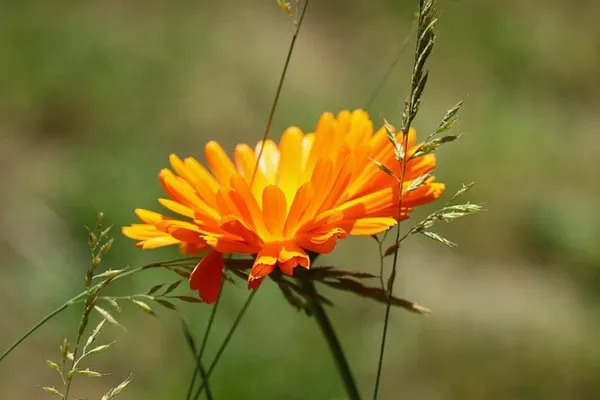Coneflowers, scientifically known as Echinacea, are a stunning and resilient addition to any garden. Known for their vibrant blooms and medicinal properties, coneflowers are a favorite among both novice and experienced gardeners. With their wide range of colors, drought tolerance, and ability to attract pollinators, these perennial beauties are a must-have in any garden. This article will provide a comprehensive guide on how to successfully grow and care for coneflowers, ensuring your garden flourishes with these vibrant blossoms.
Choosing the Right Coneflower Varieties
Echinacea comes in a variety of species and cultivars, each with its unique characteristics and visual appeal. Before you start growing coneflowers, it’s essential to choose the right varieties for your garden. Here are a few popular options to consider:
Echinacea purpurea: The most common and classic variety, Echinacea purpurea, is known for its bright pink-purple petals and prominent, spiky orange-brown centers.
Echinacea pallida: This variety boasts pale pink petals with a more prominent cone, making it a unique choice for coneflower enthusiasts.
Echinacea paradoxa: Known for its striking yellow petals and dark brown cones, this species is perfect for adding a burst of sunshine to your garden.
Echinacea angustifolia: With slender, lavender-pink petals and a sturdy cone, this species is a delightful addition to any coneflower collection.
Echinacea hybrids: There are numerous hybrid coneflower varieties available, offering an even broader range of colors and appearances. Hybrids can be a great choice if you want something distinctive.
Selecting a Planting Location
Once you’ve chosen your coneflower varieties, it’s crucial to pick the right location for planting. Coneflowers thrive in full sun but can tolerate some partial shade, although they may not bloom as profusely. Ensure that the chosen spot receives at least six to eight hours of direct sunlight daily.
Coneflowers also prefer well-draining soil. They can tolerate various soil types, but sandy or loamy soil with good drainage is ideal. Before planting, amend the soil with organic matter, such as compost, to improve its texture and fertility.
Planting Coneflowers
Planting coneflowers is a straightforward process that can be done in both spring and fall. Follow these steps for a successful planting:
Prepare the Soil: Start by loosening the soil in the selected area to a depth of about 12 inches. If your soil is heavy clay, consider mixing in some sand to enhance drainage.
Dig a Hole: Create a hole that is approximately twice the width of the coneflower’s root ball and deep enough to accommodate the roots comfortably.
Plant the Coneflower: Gently remove the coneflower from its container and place it in the hole. Make sure the top of the root ball is level with the soil surface. Backfill the hole with soil and pat it down gently.
Water Thoroughly: After planting, give the coneflower a good soaking to help settle the soil around the roots.
Spacing between coneflowers will depend on the specific variety and its expected size. Typically, leave about 18 to 24 inches between plants to allow for their mature growth.
Caring for Coneflowers
Caring for coneflowers is relatively low-maintenance, but a few key tasks will ensure your plants thrive:
Watering: Coneflowers are drought-tolerant once established, but they benefit from regular watering during their first growing season. Water deeply when the soil is dry to the touch, but avoid overwatering, which can lead to root rot.
Mulching: Applying a layer of mulch around the base of your coneflowers can help retain moisture, suppress weeds, and regulate soil temperature. Use a few inches of organic mulch, such as wood chips or straw.
Deadheading: Deadheading, or the removal of spent blooms, encourages continuous flowering and prevents the plant from putting energy into seed production. Cut the spent flowers back to the nearest healthy leaf or bud.
Fertilizing: Coneflowers generally don’t require heavy feeding. In most cases, a balanced, slow-release fertilizer applied in spring is sufficient. Follow the package instructions for proper application.
Dividing: Over time, coneflowers may become crowded and benefit from division. This is typically done every three to four years in early spring or late fall. Lift the plant, divide the root ball, and replant the divisions.
Pest and Disease Control: Coneflowers are generally pest-resistant, but they can sometimes fall victim to aphids or powdery mildew. Use organic pest control methods or consider companion planting to deter pests.
Attracting Pollinators
One of the most compelling reasons to grow coneflowers is their ability to attract pollinators, especially butterflies and bees. Their nectar-rich blossoms serve as a valuable food source, aiding in the conservation of these essential insects. To enhance the pollinator-friendly aspect of your garden, consider planting a diverse range of coneflower varieties and other nectar-rich flowers.
Conclusion
Coneflowers, with their stunning blooms, low-maintenance care requirements, and pollinator-attracting properties, are a fantastic addition to any garden. By selecting the right varieties, choosing an optimal planting location, and following proper care and maintenance techniques, you can enjoy these resilient perennials year after year. Whether you’re a seasoned gardener or a novice, growing coneflowers is a rewarding experience that will brighten your garden and contribute to the health of your local ecosystem. With a little patience and care, your garden will flourish with these vibrant, iconic blossoms.


